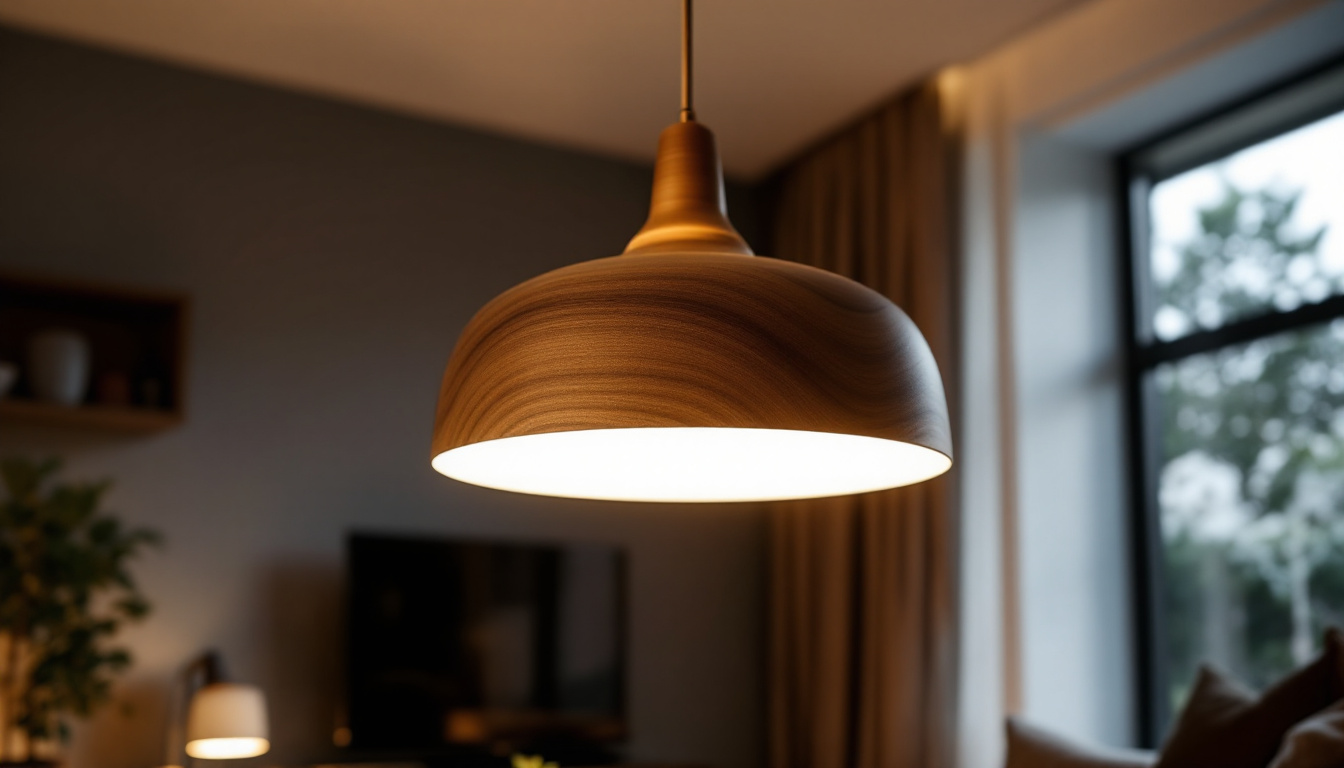
Ceiling pendants are a popular choice for both residential and commercial spaces, serving as functional lighting fixtures while also enhancing the aesthetic appeal of a room. For lighting contractors, understanding the nuances of ceiling pendant installation and selection is essential. This article provides quick tips to help contractors navigate the complexities of working with ceiling pendants, ensuring both efficiency and quality in their projects.
Before diving into installation techniques and design considerations, it’s crucial to understand what ceiling pendants are and how they differ from other lighting options. Ceiling pendants are fixtures that hang from the ceiling, typically suspended by a cord, chain, or rod. They come in various styles, sizes, and materials, making them versatile for different settings. Whether you’re looking to illuminate a cozy nook or make a bold statement in a grand foyer, ceiling pendants can adapt to your needs and enhance the overall aesthetic of your space.
There are several types of ceiling pendants available, each serving different purposes. For instance, some pendants are designed for task lighting, such as over kitchen islands or dining tables, while others may be more decorative, serving as focal points in a room. Understanding the different types enables contractors to recommend the best options to their clients. Additionally, some pendants are adjustable in height, allowing for customization based on the specific needs of the space. This adaptability is particularly beneficial in homes with varying ceiling heights or in commercial settings where lighting needs may change throughout the day.
The materials used in ceiling pendants can significantly affect their appearance and functionality. Common materials include glass, metal, and fabric. Each material offers distinct advantages; for example, glass pendants can provide a modern, sleek look, while fabric shades can soften the light and create a warm ambiance. Contractors should consider the overall design theme of the space when selecting pendants, ensuring they complement the existing decor. Moreover, the finish of the materials can play a crucial role in the final impact; polished metals can add a touch of luxury, while matte finishes may lend a more understated elegance. It’s also worth noting that the choice of material can influence the light’s diffusion and intensity, affecting how the space feels and functions.
In addition to material and design, the scale of the pendant is essential. A large, bold pendant can serve as a statement piece in a room, drawing the eye and anchoring the space, while smaller pendants can be clustered together for a more dynamic visual effect. This layering of lighting not only enhances the aesthetic appeal but also allows for more versatile illumination options. When planning a lighting scheme, it’s important to consider how different pendants will interact with each other and the overall layout of the room, ensuring that they work harmoniously to create a balanced and inviting atmosphere.
Proper installation is key to ensuring that ceiling pendants function correctly and safely. Here are some essential tips for lighting contractors to keep in mind during the installation process.
Before installation, it’s vital to assess the space where the pendant will be hung. Factors such as ceiling height, room size, and existing electrical wiring should all be considered. For instance, in rooms with high ceilings, longer pendant fixtures may be necessary to ensure adequate lighting levels. Conversely, in smaller spaces, shorter pendants can help avoid overwhelming the area. Additionally, consider the overall design aesthetic of the room; a well-placed pendant can serve as a focal point, enhancing the room’s decor and creating a harmonious balance with other elements like furniture and wall color.
One of the most critical aspects of pendant installation is determining the correct height at which to hang the fixture. A general rule of thumb is to hang pendants about 30 to 36 inches above a countertop or table. This height allows for ample light while still being visually pleasing. However, adjustments may be needed based on the specific design and functionality of the space. For example, in dining areas, you might want to hang pendants slightly lower to create an intimate atmosphere, while in workspaces, a higher installation can help reduce glare and provide better task lighting.
When installing ceiling pendants, electrical considerations are paramount. Ensure that the electrical box is rated to support the weight of the pendant, as some fixtures can be quite heavy. Additionally, check that the wiring is up to code and can handle the wattage of the bulbs being used. Proper grounding and secure connections are essential to prevent electrical hazards. It’s also wise to consider using dimmer switches, which can enhance the versatility of the lighting. Dimming capabilities allow for adjusting the ambiance of the space, making it suitable for various activities, from casual gatherings to formal dinners.
Choosing the right bulbs for your ceiling pendants is another crucial aspect of the installation process. LED bulbs are becoming increasingly popular due to their energy efficiency and long lifespan, but they also come in various color temperatures that can dramatically affect the mood of a room. Warmer tones can create a cozy atmosphere, while cooler tones are ideal for more modern, vibrant spaces. Additionally, consider the lumen output of the bulbs; higher lumens provide brighter light, which is essential in areas where tasks are performed, such as kitchens or workspaces. Balancing the aesthetic appeal of the pendant with functional lighting needs is key to achieving the desired effect.
Finally, when installing ceiling pendants, it’s important to think about maintenance and accessibility. Ensure that the fixture is easy to reach for bulb replacement and cleaning. Some pendants may require more frequent maintenance due to dust accumulation or grease, especially in kitchen settings. Installing pendants with adjustable heights or those that are easy to disassemble can simplify this process. Additionally, consider the placement in relation to furniture and other fixtures; ensuring that pendants are not obstructed will help maintain their functionality and visual impact over time.
The choice of bulbs can dramatically influence the performance and ambiance of ceiling pendants. Lighting contractors should be knowledgeable about the various options available to make informed recommendations to clients.
There are several types of bulbs suitable for ceiling pendants, including incandescent, LED, and fluorescent. Incandescent bulbs offer warm light but are less energy-efficient, while LED bulbs provide longevity and energy savings. Fluorescent bulbs are also energy-efficient but may not produce the warm light desired in residential settings. Understanding the pros and cons of each type helps contractors guide clients toward the best choice for their needs.
Color temperature, measured in Kelvins, affects the mood of a space. Warmer temperatures (around 2700K to 3000K) create a cozy atmosphere, ideal for living areas, while cooler temperatures (4000K and above) are better suited for workspaces. Additionally, brightness, measured in lumens, should be considered to ensure that the pendant provides adequate lighting for its intended use.
Integrating ceiling pendants into a room’s design requires a thoughtful approach. Lighting contractors should consider how the pendant interacts with other design elements in the space.
When selecting ceiling pendants, it’s essential to ensure they complement the existing decor. For example, a sleek, modern pendant may clash with a traditional interior. Contractors should encourage clients to consider the overall aesthetic of the room, including color schemes, furniture styles, and architectural features.
Ceiling pendants should be part of a broader lighting strategy that includes ambient, task, and accent lighting. Layering different types of lighting creates a more dynamic and functional space. Contractors can suggest adding wall sconces or recessed lighting alongside pendants to achieve a well-balanced lighting scheme.
Once installed, ceiling pendants require ongoing maintenance to ensure they remain functional and aesthetically pleasing. Lighting contractors should educate clients on proper care techniques.
Dust and grime can accumulate on pendant fixtures, affecting their performance and appearance. Regular cleaning is essential. For glass pendants, a soft cloth and mild detergent can effectively remove dirt without scratching the surface. Metal fixtures may require specific cleaners to prevent tarnishing. Contractors should provide clients with tailored cleaning recommendations based on the materials used in their pendants.
Bulb replacement is another critical aspect of maintenance. Contractors should inform clients about the lifespan of their chosen bulbs and when to expect replacements. Providing guidance on how to safely replace bulbs can help prevent accidents and ensure the longevity of the fixture.
One common mistake is overlooking the scale of the pendant in relation to the room. A large pendant in a small room can feel overwhelming, while a small pendant in a large space may look insignificant. Taking measurements and considering the proportions of the room can help contractors select the right size for the pendant.
Another critical aspect is adhering to local electrical codes and regulations. Ignoring these can lead to safety hazards and potential legal issues. Contractors should stay informed about local codes and ensure that all installations comply with these standards.
Ceiling pendants are a versatile and stylish lighting solution that can enhance any space. For lighting contractors, understanding the intricacies of selection, installation, and maintenance is essential for delivering quality work. By considering factors such as design integration, bulb choices, and proper installation techniques, contractors can ensure their clients receive the best possible lighting solutions. With these quick tips, contractors can approach ceiling pendant projects with confidence, ultimately leading to satisfied clients and successful installations.
Ready to elevate your lighting projects with the finest ceiling pendants on the market? Look no further than LumenWholesale, where we provide contractors with exceptional, spec-grade lighting products at prices that can’t be beaten. Our commitment to quality and affordability means you can access a vast selection of premium lighting without the burden of inflated costs. Plus, with the convenience of free shipping on bulk orders, you can stock up on the best lighting solutions without any hidden fees. Don’t compromise on quality or value—choose LumenWholesale for your next project and experience the ultimate in contractor-friendly lighting solutions. Discover our unbeatable wholesale lighting deals at the best value by visiting Wholesale Lighting at the Best Value.

Discover the essential guide for lighting contractors on selecting the perfect parking lamps.

Discover essential tips and best practices for lighting contractors in our comprehensive guide to commercial hanging lights.

Discover the common pitfalls lighting contractors encounter when illuminating garages.

Discover expert insights from lighting contractors on enhancing your outdoor space with pole garden lights.